Many travelers have heard of Lucca but aren’t quite sure what makes it special. Unlike Florence or Pisa, Lucca doesn’t have a single world-famous landmark, but that’s part of its charm. The entire city feels like stepping back in time, offering a harmonious blend of history, culture, and local traditions. Follow our guide to discover what to see in Lucca!
What to See in Lucca: Start with Its Iconic Walls
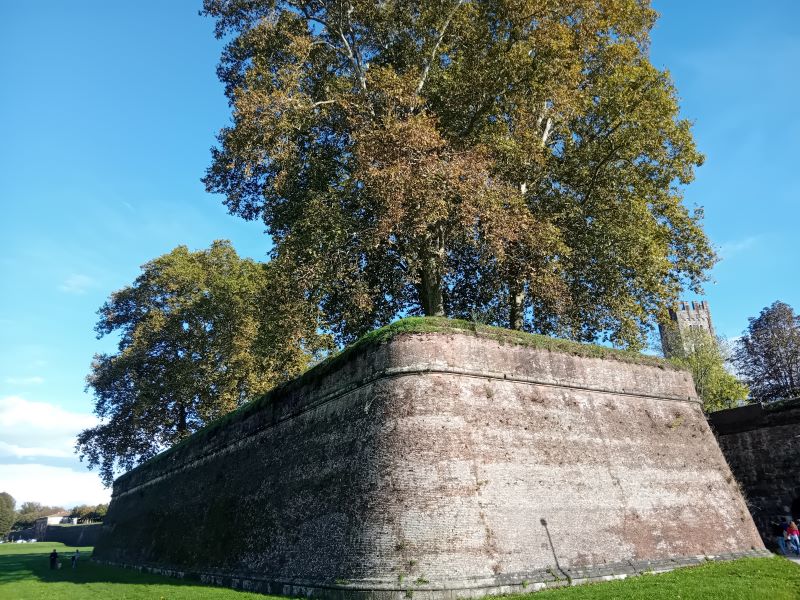
Lucca is one of the few Italian cities, alongside Ferrara and Grosseto, where the entire historic center is enclosed within its original walls. Stretching over 4 km (2.5 miles), these Renaissance-era fortifications are among the best-preserved in Europe. Originally built in Roman times and expanded during the Middle Ages, the walls helped Lucca maintain its independence from Florence — so much so that you won’t find the Medici family emblem on any buildings here!
Two remarkable women played key roles in shaping these walls. Elisa Baciocchi, Napoleon’s sister, extended them to the current Porta Elisa, while Maria Luisa of Bourbon transformed them from military defenses into the scenic pedestrian and cycling path we enjoy today.
The Walls and Lucca’s Festivals
The walls are closely tied to one of Lucca’s biggest celebrations: the Festival of San Paolino, the city’s patron saint. According to legend, San Paolino performed a miracle on July 12, 1664, when a cannon misfired into a crowd of worshippers, yet miraculously no one was injured.
Each year around this date, Lucca comes alive with medieval reenactments, archery tournaments, flag-throwing performances, and historical parades. If you’re visiting in mid-July, you’ll witness the city in full festive spirit!
Palazzo Pfanner: A Hidden Jewel
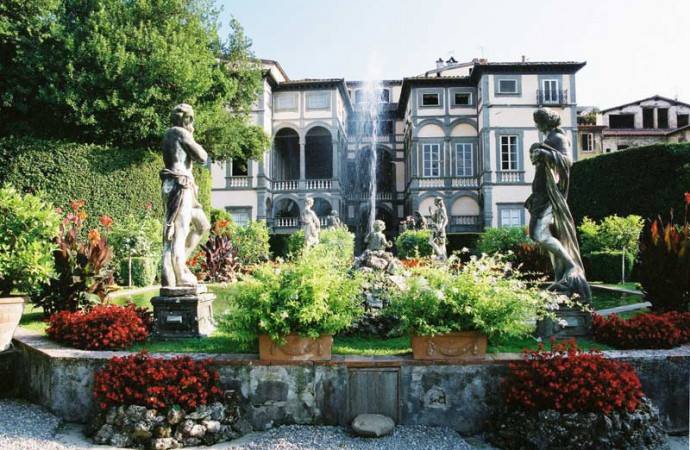
From atop the walls, you can’t miss the stunning baroque gardens of Palazzo Pfanner, designed by Sicilian architect Filippo Juvarra in the early 1700s. Originally built by the wealthy Moriconi silk merchants, the palace later became home to Austria’s Felix Pfanner, who founded one of central Italy’s first breweries here in 1860.
Palazzo Pfanner in Cinema
The palace has also served as a film set for several movies, including Portrait of a Lady (1996) starring Nicole Kidman and John Malkovich. Not bad for a small Tuscan town!
Piazza dell’Anfiteatro: Lucca’s Most Famous Square
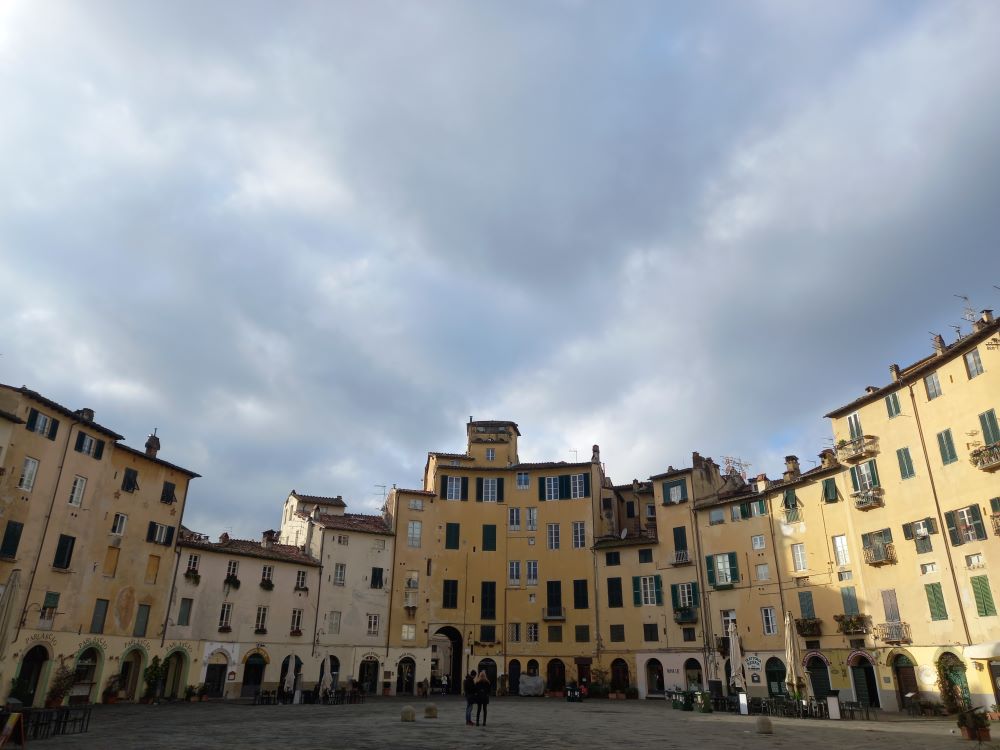
When you hear the word “amphitheater,” you might think of Rome’s Colosseum. Lucca’s Piazza dell’Anfiteatro gets its name from its elliptical shape, which follows the footprint of a 2nd-century Roman amphitheater.
Over the centuries, it has been used as a salt depot, a prison, and finally, a marketplace. Today, the square is one of the city’s most photographed spots, perfect for grabbing a coffee or shopping for souvenirs.
Climbing Torre Guinigi: a Tower with Trees on Top!
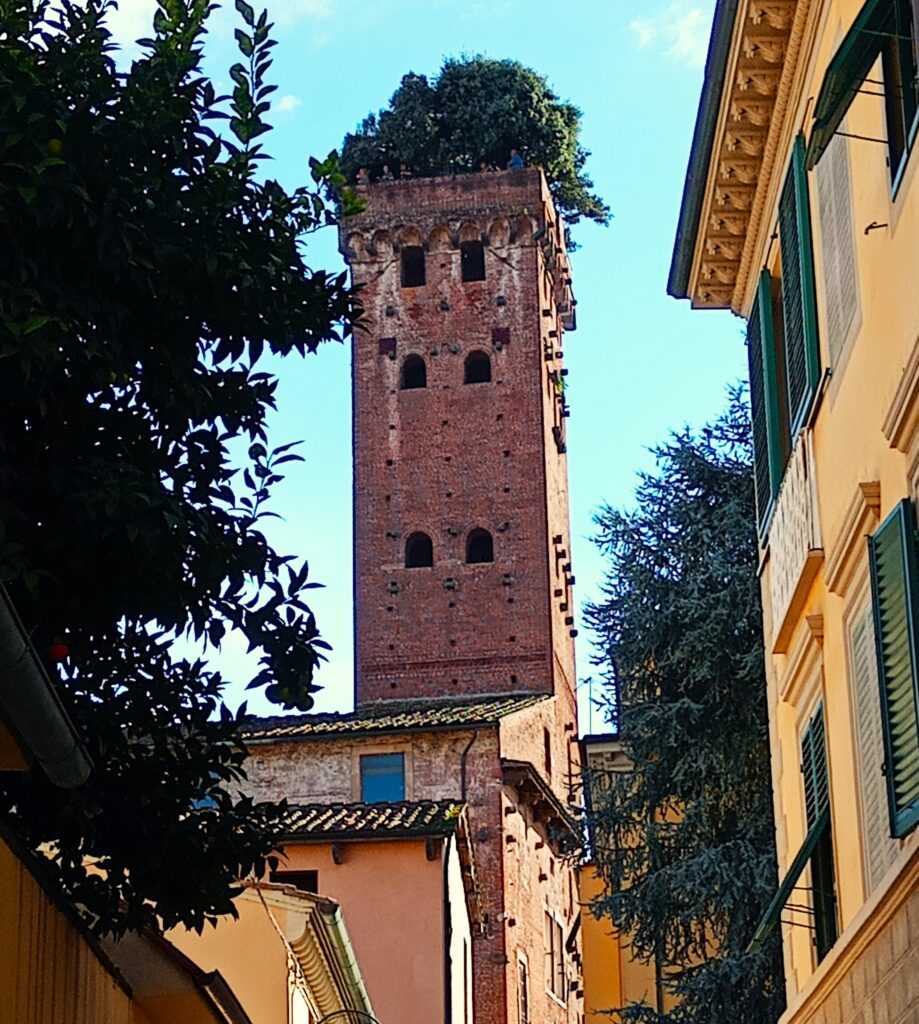
For those looking for what to see in Lucca from above, Torre Guinigi is a spectacular sight. This medieval tower, built in the 14th century, is famous for the oak trees growing on its rooftop.
Climbing its 230 steps rewards you with a breathtaking panoramic view of Lucca’s red rooftops and surrounding Tuscan hills.
The Duomo of San Martino: A Must-See in Lucca
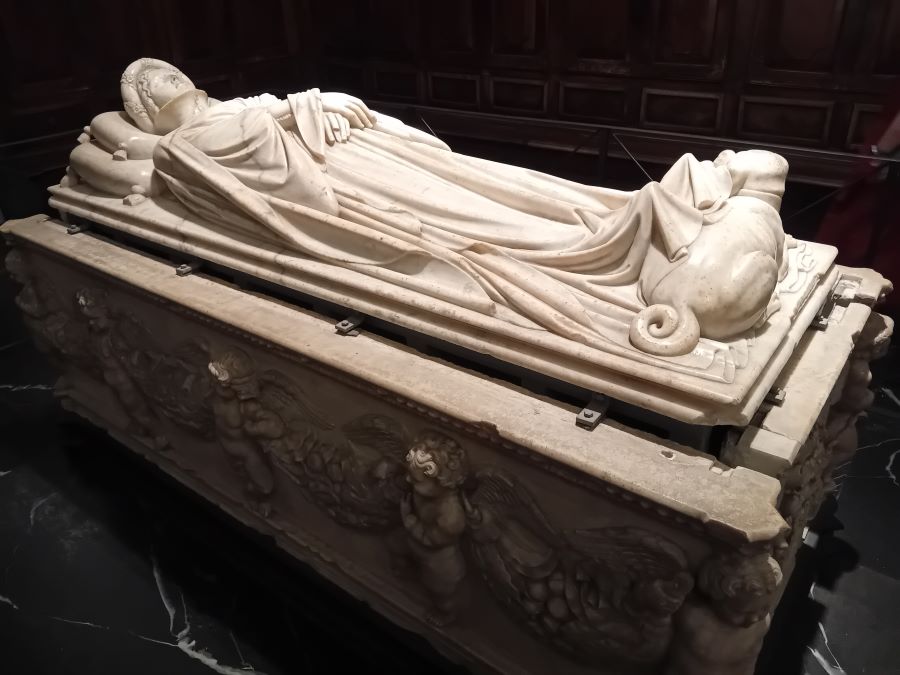
Among the top things to see in Lucca, the Duomo di San Martino is an architectural gem.
It dates back to the Middle Ages and is dedicated to Saint Martin of Tours. Its asymmetrical facade is a quirky architectural feature — the narrowest arch was built around an already-existing bell tower.
Before stepping inside, look for the labyrinth engraving on the right-side pillar. This medieval symbol represents the journey of life, inspired by the Greek myth of Theseus and the Minotaur.
Inside, you’ll find masterpieces like Tintoretto’s Last Supper and Domenico Ghirlandaio’s Madonna and Saints. The cathedral is also home to the funeral monument of Ilaria del Carretto, a stunning sculpture of Paolo Guinigi’s young wife, crafted by Jacopo della Quercia in 1405.
Piazza San Michele and the Church of San Michele in Foro
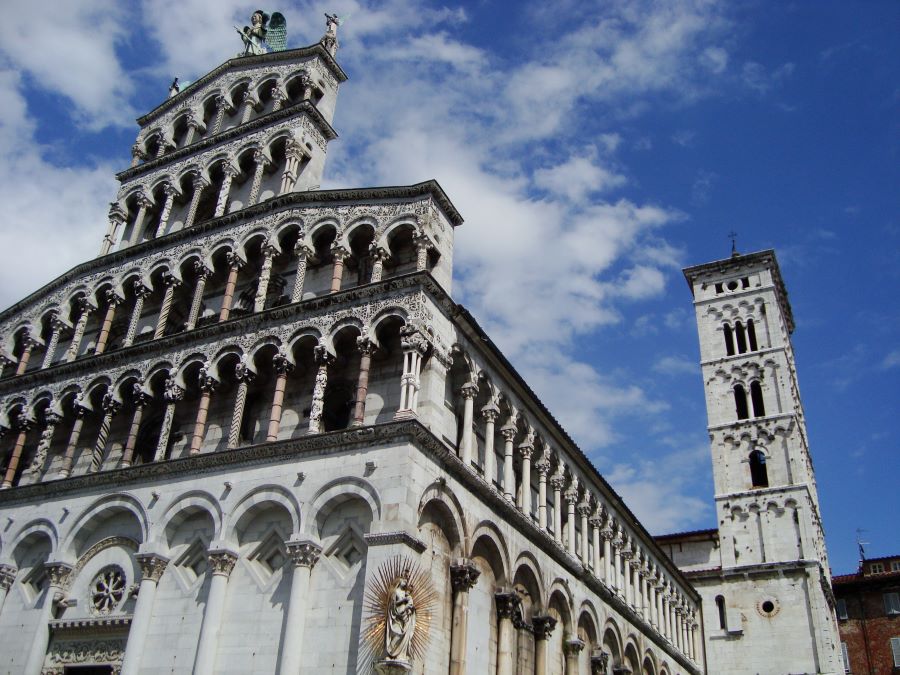
This lively square marks the heart of Lucca’s old town. Once the site of the Roman Forum, it later became the location of public executions in the Middle Ages. Today, it’s dominated by the magnificent San Michele in Foro Church.
With its striking Romanesque-Gothic facade and towering statue of Archangel Michael, this church is a must-visit. Inside, don’t miss Filippino Lippi’s 1438 tempera painting depicting various saints and a charming lion peeking playfully from behind Saint Jerome’s robes.
A Perfect Day in Lucca: Suggested Itinerary
Morning:
- Walk through Piazza dell’Anfiteatro
- Climb Torre Guinigi
- Visit San Michele in Foro
- Admire the mosaic on San Frediano Basilica
- Explore Palazzo Pfanner’s gardens
Afternoon:
- Stroll along Lucca’s walls for incredible city views
- Visit San Martino Cathedral, inside and out
- Relax in Piazza Napoleone
Practical Info, Costs & Tickets
- Guided tour: Full-day tours start at €420 (not per person). Contact info@iconatoscana for details.
- Cathedral (Duomo di San Martino): €3 (free for kids under 6)
- Torre Guinigi: €8 (€6.50 reduced)
- Palazzo Pfanner: €6.50 (house + garden), €4.50 (garden only)
- Tickets: Available on Lucca’s official city website.
Tips for Visiting Lucca
- Avoid visiting during Lucca Comics & Games (late October – early November). This massive pop-culture event draws huge crowds, making it difficult to explore the city’s historic sites.
- Check out the Lucca Summer Festival. The 2025 lineup includes Simple Minds and Thirty Seconds to Mars.
- Love classical music? Lucca is the birthplace of Giacomo Puccini and Luigi Boccherini. The city hosts incredible concerts year-round—check the official music festival website for details.
Lucca is a city full of surprises, offering a mix of history, art, and vibrant local culture. Whether you’re wandering through its medieval streets, admiring the stunning architecture, or enjoying a quiet moment on its ancient walls, you’re sure to fall in love with this Tuscan treasure!